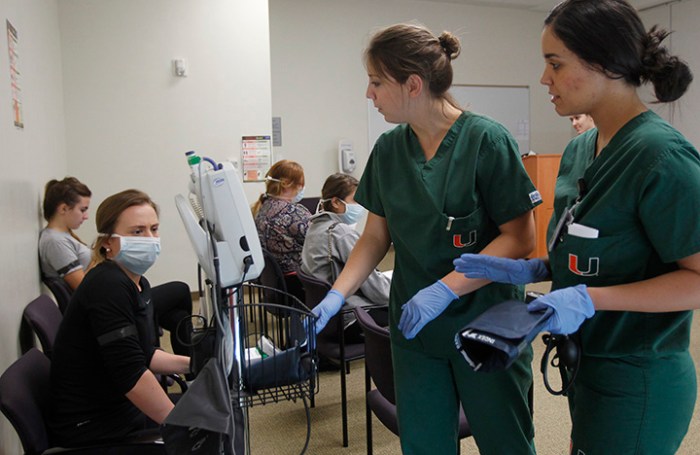A nurse is initiating a protective environment, a critical aspect of patient care that encompasses physical safety, emotional well-being, and infection control. Creating and maintaining such an environment requires a comprehensive approach that involves assessing patient needs, implementing evidence-based strategies, and fostering effective communication and collaboration among healthcare professionals.
Nurses play a pivotal role in establishing a protective environment by identifying and addressing potential risks, educating patients and families, and advocating for patient safety. This proactive approach not only enhances patient outcomes but also contributes to a positive and supportive healthcare experience.
Protective Environment Definition and Significance: A Nurse Is Initiating A Protective Environment

A protective environment in nursing refers to a setting where patients are safeguarded from physical, emotional, and psychological harm. Creating a protective environment is paramount for patient well-being, promoting recovery, and maintaining dignity.
Protective environments are essential in healthcare settings to:
- Prevent accidents and injuries
- Safeguard patients from infections
- Protect patients from emotional distress
- Maintain confidentiality and privacy
- Promote a sense of security and well-being
Examples of protective environments in healthcare settings include:
- Secure hospital units for patients with mental health conditions
- Designated isolation rooms for patients with infectious diseases
- Private rooms for patients requiring confidentiality
- Home healthcare environments that prioritize safety and accessibility
Elements of a Protective Environment
Key elements that contribute to a protective environment include:
- Physical safety:Secure infrastructure, proper lighting, and adequate staffing
- Emotional well-being:Respectful and compassionate care, privacy, and support
- Infection control:Adherence to infection prevention protocols, proper hand hygiene, and appropriate use of personal protective equipment
- Confidentiality and privacy:Secure storage of patient information, private communication, and respect for patient autonomy
Nurse’s Role in Initiating a Protective Environment
Nurses play a crucial role in establishing a protective environment:
- Assessing patients’ needs:Identifying potential risks and vulnerabilities
- Developing individualized care plans:Tailoring interventions to meet specific patient needs
- Educating patients and families:Informing them about safety measures and promoting self-care
Strategies for Creating a Protective Environment
Practical strategies for creating a protective environment include:
- Physical safety:Installing safety rails, using non-slip flooring, and maintaining proper lighting
- Emotional support:Providing a calming and supportive environment, offering emotional support, and respecting patient autonomy
- Infection prevention:Implementing hand hygiene protocols, isolating infectious patients, and using appropriate personal protective equipment
Communication and Collaboration
Effective communication is vital for creating a protective environment:
- Nurse-patient communication:Establishing clear communication channels, listening attentively, and providing timely information
- Interdisciplinary collaboration:Working with other healthcare professionals to ensure patient safety and well-being
Monitoring and Evaluation, A nurse is initiating a protective environment
Monitoring and evaluating the effectiveness of protective environments is essential:
- Patient feedback:Collecting feedback from patients to identify areas for improvement
- Data analysis:Reviewing incident reports, infection rates, and other data to assess the effectiveness of protective measures
- Quality improvement initiatives:Implementing ongoing quality improvement initiatives to enhance patient safety and well-being
FAQ Summary
What are the key elements of a protective environment?
Key elements include physical safety measures, emotional support systems, infection control protocols, and the maintenance of confidentiality and privacy.
How do nurses assess patients’ needs in creating a protective environment?
Nurses conduct comprehensive assessments that consider physical, emotional, and social factors to tailor individualized care plans that address specific patient needs.
What role does communication play in maintaining a protective environment?
Effective communication is vital for sharing information, coordinating care, and addressing concerns promptly. Nurses collaborate with patients, families, and other healthcare professionals to ensure a shared understanding of safety measures and protocols.


